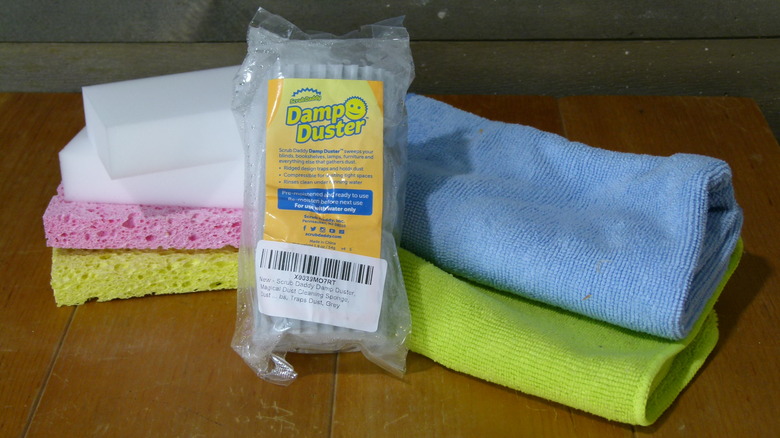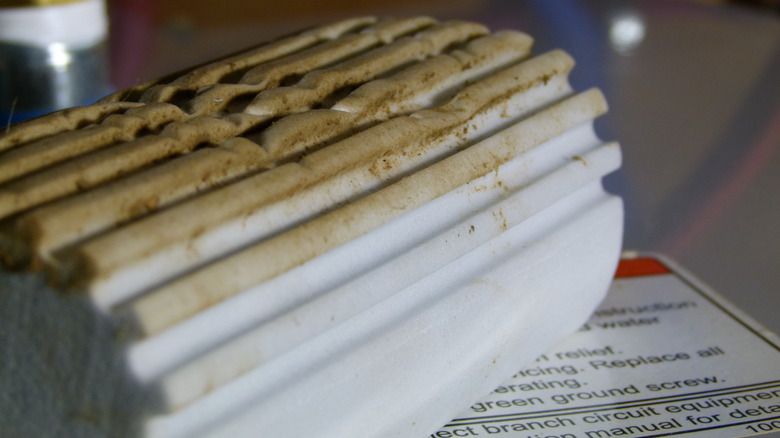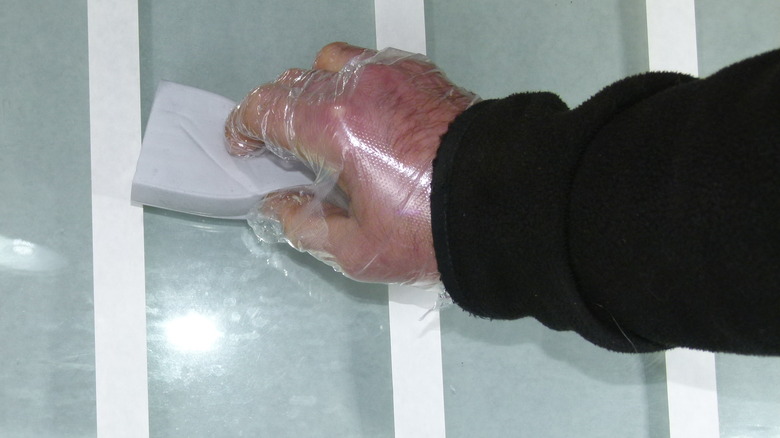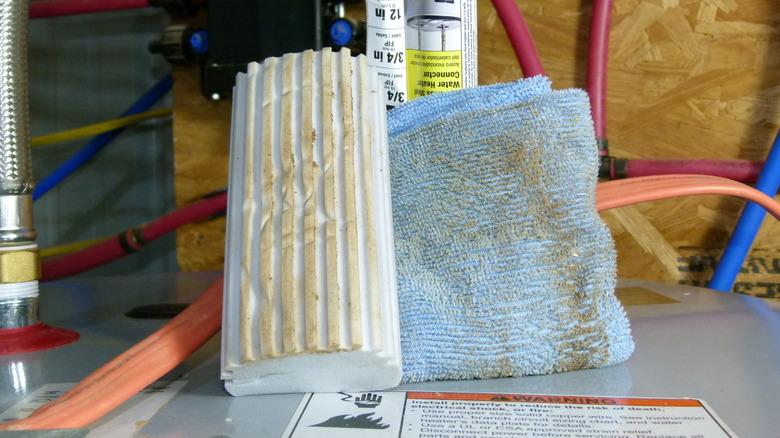ScrubDaddy Damp Duster: Does This Viral Cleaning Tool Really Deliver?
It's not exactly bewildering that someone on TikTok would set the #CleakTok world on fire by dusting off the top of a baseboard. These are, after all, people obsessed with minutia, and for them a visible mote of dust is a speck too far. What does seem unusual is that an influencer like Vanesa Amaro can get 7.3 million views and 1,600 comments on a video of her cleaning some baseboards that are already pretty clean by most standards. The explanation is a viral sponge, and while that might not sound like the kind of thing people will like, it most certainly is. Meet the Damp Duster, an $11.99 pre-moistened viral dusting sponge from viral cleaning supplies maker Scrub Daddy.
Amaro certainly isn't alone; there appear to be quite a few users with 1,000,000+ views on their Damp Duster videos, such as lenacleansup and marilyn.2685. These folks are all basically dusting random things that don't need a thorough cleaning, but might have a bit of dust or pet hair on them. A stroll through the #dampduster hashtag shows people using the Damp Duster on just about everything, all with great success and effusive praise. A few even use the sponge as a sponge, soaking up liquids, but most stick to dusting.
What's strange is how people get worked up over what appears to be, and in fact is, a sponge. One clue might be found among Vanesa Amaro's recurring hashtags: #scrubdaddypartner.
A sponge, but far more. Maybe.
It's no secret that TikTok influencers get paid for their posts. According to Shopify, TikTokkers with over a million followers can earn more than $10,000 per post. It makes sense, then, to see these people dusting things that could probably wait for another day. In fact, at that rate it would be completely rational to go out and buy things that need dusting. But just because someone might make money promoting a product doesn't mean the product isn't great. (Remember television commercials? From back in the day? Famous people have always gotten paid to hawk products.)
The Damp Duster packaging makes four basic claims: It dusts; it's ridged to trap dust; it's compressible; and it is easy to rinse clean. The TikTokkers make this second claim clear quickly enough: The idea is that the sponge better holds onto dust than, say, traditional feather dusters, which mostly make dust airborne so you can clean it again tomorrow, like some sort of home economics Sisyphus. Amazon reviewers agree, giving the Damp Duster 4.8 stars on 19,198 ratings.
But Fakespot's analysis of the Amazon reviews earned the reviews a D grade (by default, the Fakespot plugin hides products with anything worse than a D) and less than 2.5 stars (poor). The site found that only 58.7% of the reviews were reliable, that Amazon itself has altered or removed as many as 4,072 reviews, and that "high deception" is involved in the Damp Duster reviews.
How we tested the Damp Duster
We trust Fakespot and find them reliable, but the premise of the Damp Duster is so simple and the claims are so believable that it seemed worth checking out ourselves. We did this by testing four products on glass, then on a workshop countertop near a vise, and finally on the dustiest thing we could find: the top of a water heater in a mechanical closet. We tested against melamine foam cleaners, since many users compare the Damp Duster's results to those of Magic Erasers. We also tested against standard kitchen sponges and microfiber cloth. All four products were damp when tested.
In the first two tests, the Damp Duster and microfiber performed similarly, cleaning about the same amount of dust away from the glass, while the sponge did just fine. The melamine foam block left some streaks of dust on the glass, and left behind a little of itself, as is the way of melamine foam. (It's worth remembering that dusting isn't what these things are for.)
We next cleaned the area near a vise because, in our workshop at least, this area tends to have a wide variety of dust, including fine powder made from grinding various metals. Again, the Damp Duster and the microfiber cloth did a little better than the sponge, which did a little better than the generic Magic Eraser.
In the final test, we only compared the Damp Duster and microfiber, and again they appeared to perform identically.
The final verdict
We only found a few distinctions throughout this process. The microfiber was slightly easier to dampen, while the Damp Duster was far easier to clean off under running water. The dust basically immediately slid off of the smooth Damp Duster surface, while the microfiber cloth had to be soaked and ringed out repeatedly. Otherwise, both cleaned almost perfectly with one pass. The microfiber cloth was also slightly easier to work around obstacles, which in our experience is among the more demanding aspects of dusting.
Since the Damp Duster is $12 and you can easily find microfiber cloths in packs for less than 40 cents per cloth, it seems to make more sense to stick with the microfiber. Still, microfiber has its own drawbacks: It's about as absorbent as a water ski, and makes even slightly rough fingers feel like Velcro when touching it. But it performs well at dusting, perhaps because its terrycloth-like texture does the same work in retaining dust as the Damp Duster's ridges.
No one is going to be disappointed with the Damp Duster, since by definition any purchaser is someone willing to spend $12 on a sponge that picks up dust well. More frugal souls might opt for microfiber, or even a cheap sponge, which is nearly as effective when damp. Ultimately, then, dampness might be the key. The Damp Duster (which comes pre-moistened, probably because the open-cell foam material dries out and hardens quickly) isn't exactly peddling a unique selling proposition by cleaning while wet.



